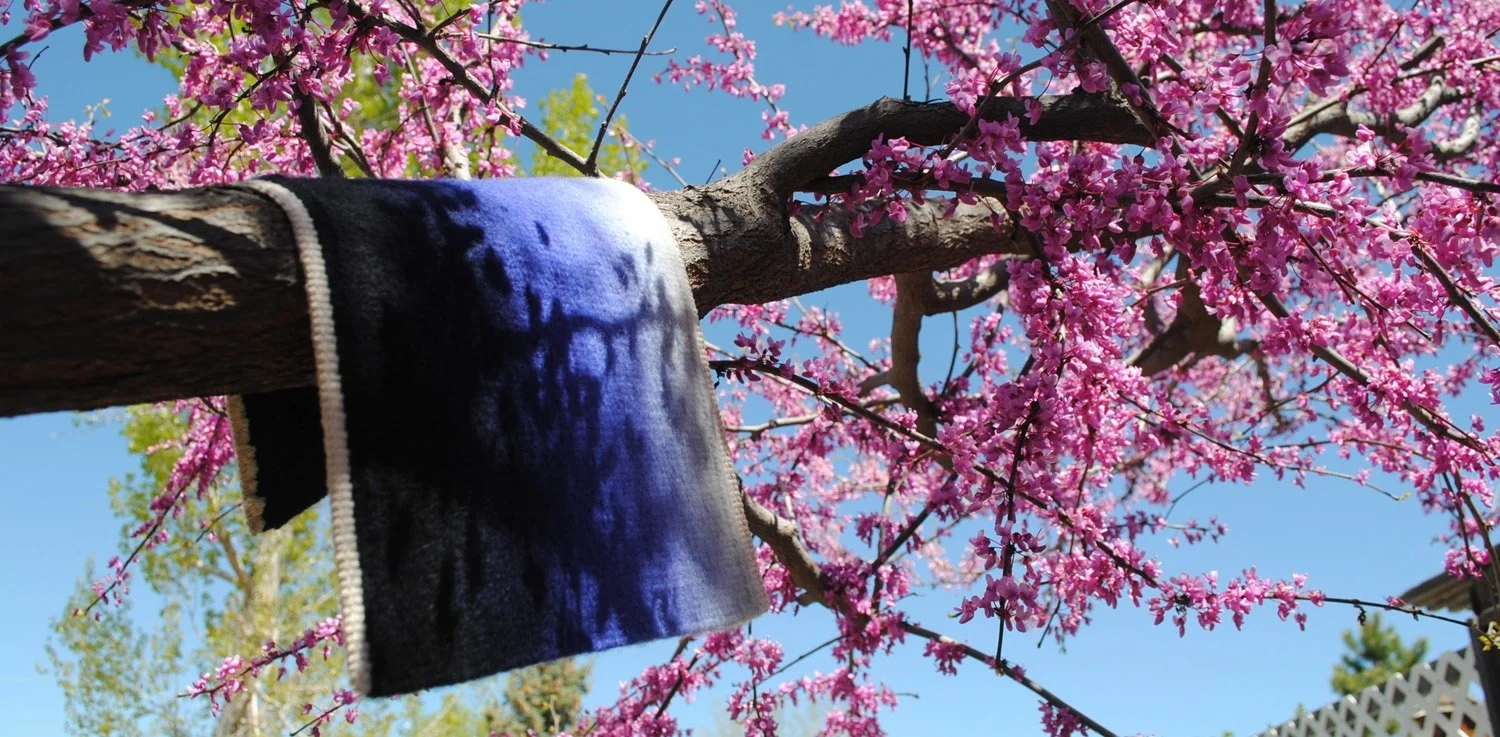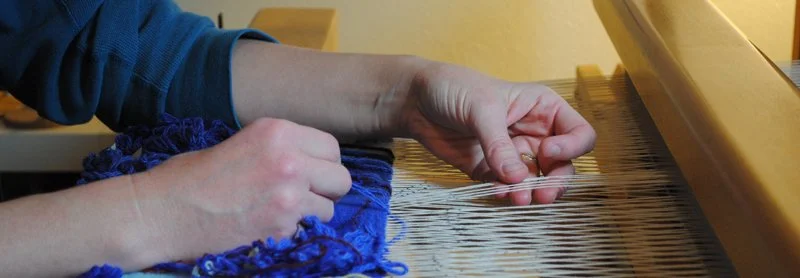I've always felt fairly private about my tapestry designs as I'm working on them. Since my apprenticeship ended 14 years ago, I rarely ask anyone for feedback on my designs unless it is a commission. Designs are fragile little beings that can be crushed by other people so easily and they need time for me to be sure enough about them to let others see them.* It is both a protective instinct that makes me guard my ideas to give them space to grow and also a fear of being criticized. No one wants their beautiful butterfly of an idea crushed by a careless comment from another human.
"What do I do when it won't weave?!" How to fix your sheds in tapestry weaving
How many times as a newer tapestry weaver have you felt frustrated because you’re weaving along and suddenly your wefts are in the wrong shed?*
Wait, what is a shed anyway?
How many of us who have been weaving tapestry a long time remember those days when every time we added or subtracted a weft in our design our sheds were wrong? Or we are trying to fill in a dip between two forms or add a new color into a pattern and there were either lice or the wefts just wouldn’t go where we wanted them to go?
On making magic carpets: the Longthread podcast
Way back when my book was brand new, so sometime in early 2021 most likely, Longthread media recorded a podcast interview with me. They re-released it this week and I had a listen in the car a few days ago. It is always reassuring to find that you sound reasonably intelligent and like you know something about your subject. While I do know a lot about tapestry weaving and my own history and I suppose I am of at least average intelligence, giving interviews does often lead me to wish I’d had a little more sparkly brilliance somehow or at least remembered to say something I forgot to mention. That feeling of regret can be pretty strong. But in this case, the interviewer was excellent and the resulting chat I had with Anne Merrow is fun to listen to.
Bhakti Ziek, A Tenuous Thread
I had the great joy of seeing Bhakti Ziek’s show at Form & Concept Gallery in Santa Fe this week. The show is a retrospective of over 50 years of her weaving life.
Bhakti’s work is full of narrative. The large installation piece that anchors the show, Wheel of Life: The Passing on of Knowledge was her thesis project at Cranbrook Academy of Art in 1989. The work uses various dye techniques and a lampas structure. Each panel is 44 x 33.5 inches. There are many stories behind this work including a reference to her father who was a cello player. The piece’s main narrative about Christian monks in 552 AD who relieved China of some of their silkworms by hiding them in their hollow walking sticks thus ending China’s silk supremacy. The story of this work has a spy-thriller feel to it.
The biggest leap I ever took
Ten years ago I left my job as an occupational therapist to be a full time artist and fiber art teacher. In that moment I didn’t know I wouldn’t return to healthcare. All I knew was that the job I thought was my perfect forever-job (pediatric outpatient OT), was ruled by a boss and a system I couldn’t stomach any more. I had only been at that job a year though it was my 17th year working as an OT.
Troubleshooting tapestry challenges
The Mirrix Chloe loom. A review.
I’ve been playing with the new Mirrix Chloe loom for several months now and I’ve had a lot of people asking me about it in my online courses and on social media. The Chloe loom is the new version of the Saffron Pocket Loom. The Saffron came out with in 2020 and I reviewed it HERE.
The Chloe loom uses the square bars that are standard on Mirrix’s bigger looms for a lap-sized loom with one tensioning bar in the middle.
I use the Saffron loom a lot for samples and teaching and honestly, I didn’t see any need at all for a new version of this loom, but I will admit to all of you, that…







